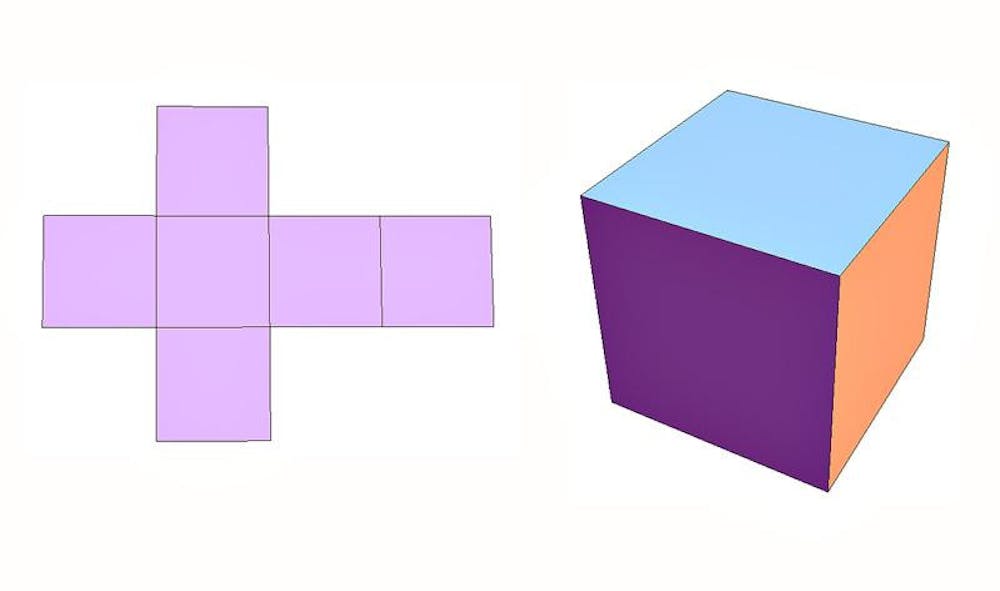Imagine the Epcot Center at Disney World — a network of triangular elements curl together to form a silver sphere. Shaped in exactly the same way, viruses are self-assembled from two-dimensional "nets." Scientists show how this folding process could be mimicked to develop new technologies, such as drug delivery systems, in a research paper to be published in the early edition of the Proceedings of the National Academy of Science this week. In the paper, Associate Professor of Applied Mathematics Govind Menon and a diverse crew of mathematicians and scientists present their findings on the most efficient of these self-assembling "nets," which on the microscopic scale resemble "tiny machines."
Think of a cross-shaped piece of paper formed from exactly six squares, and then fold the piece of paper into a cube, suggested Ryan Kaplan '12, a mathematics and computer science concentrator and one of the paper's authors. Conceptually, the cross is the "net," and the cube is the polyhedron, he explained. A cube is a relatively simple polyhedron: In addition to the cross shape, 10 other patterns of six squares will combine into a cube, for a total of 11 possible "nets." But when calculating the nets for more complicated solids like the dodecahedron and the icosahedron, possibilities undergo something Menon called a "combinatorial explosion"— the total nets for each of those solids is 43,380.
The question then becomes how to cut through those combinatorial explosions with computer-coded algorithms to select the nets that "imitate biology as closely as possible" and reproduce naturally occurring viral structures, Menon said. Replicating viral structure could be one step toward harnessing the effectiveness of viruses' targeted attack for, among other things, the delivery of cancer medicine. The drugs could be delivered to targeted sites "in containers the size of a dust mite," eliminating the harmful side effects of less specific chemotherapy drugs, he said.
The "success" of a net begins with the materials, Menon said. Metal hinges and panels on the nanoscale enable a net to assemble of its own accord. But some nets will "mess up," folding in the wrong order or direction and ruining their potential as "containers," said Drew Kunas '12, an applied mathematics concentrator who also authored the paper. Bringing math into the picture allowed researchers to determine the specific spatial characteristics of a net — especially its "compactness"— that led to the highest success rates of folding.
In addition to metals, some synthetic materials have the capacity for self-assembly, according to the team's collaborators from Johns Hopkins University, suggesting the relevance of the researchers' findings to diverse fields, including electronics and artificial tissue building.
"Two-dimensional circuit boards are a waste of space," Kunas said. Following the trend in electronics toward smaller and smaller devices, self-assembling three-dimensional circuit boards could easily shrink the size of gadgets past what was previously thought possible, he said.
"I have a colleague who wants to build artificial tissues," Menon said. "It's interesting to think, geometrically, how do you build a flat lung and fold it up?"
Menon admitted that the full list of technological possibilities proposed by his colleagues are more than he or his students could possibly probe with advanced mathematics. But he remains excited about the frontiers opened by creating "mimics of biology" vetted by the efficiency of math and engineering, he said.
"It sounds like science fiction, but it's not. These are real possibilities," he said, laughing.

ADVERTISEMENT




